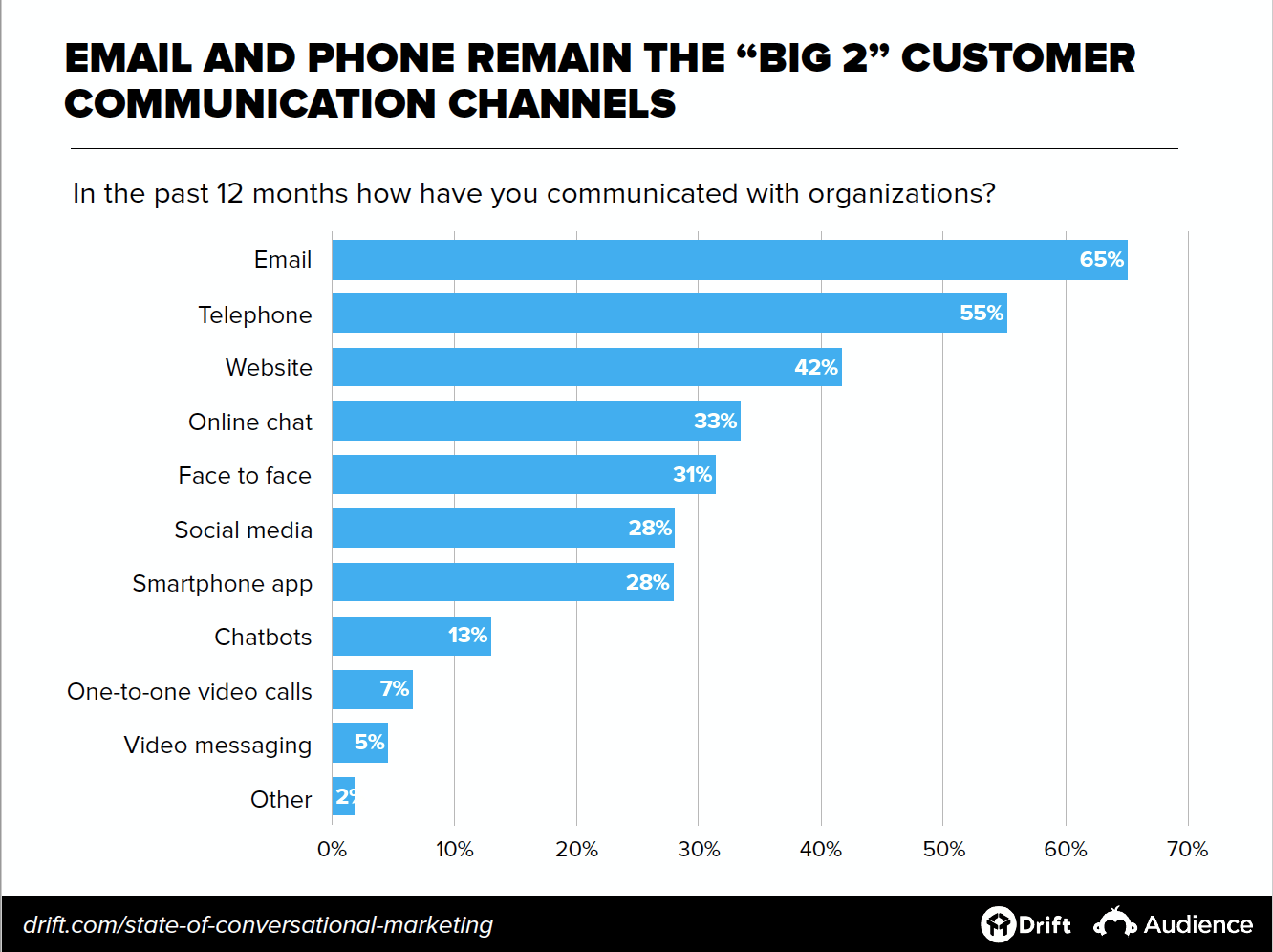To personalize the customer experience, you need to have a deep understanding of all the interactions your customers have with your organization through the customer journey.
You also need to gather data about your customers in a structured and centralized way. With this information, you can deliver experiences and messages that individually add value to each customer’s touchpoint.
Let’s look at how to do this and why you should start personalizing the customer experience today.
As customer experience and marketing personalization are becoming the norm among businesses of all kinds, marketers start to wonder how to personalize the customer experience.
This is why I created this guide with examples that you can apply to any organization: From marketing automation to personalized marketing, all this has a lot to do with the experience your customer perceives and conceives. It can also help you change the course of your business and improve your relationship with your customers at scale.
Customer experience has become in recent years one of the main pillars of organizations that truly understand their customers. These organizations seek to proactively satisfy their customers’ needs, desires, and objections to increase the value perceived from the organization’s offering. That is why it is imperative to understand the role personalization plays in a great customer experience strategy that is aligned with the customer.
There are three basic steps that any organization must follow to personalize the experience of their client base:
- Re-analyze your buyer personas and go one step further with augmented buyer personas (keep reading to know more about this).
- Align all departments and teams in your organization to be customer-focused.
- Use the data you have about your customers and their interactions with your company for the benefit of your customers, individually, but in a scalable way.
A successful customer experience strategy is always useful, usable, and enjoyable from the customer’s point of view. In customer experience, personalization is key because it helps your business to get closer to your customers by anticipating their needs and using customer knowledge on behalf of customers and aligned with your organization’s goals.
This is one of the reasons why personalization in customer service wins every time. Customers expect anticipation the same way they expect that businesses know everything about their particular context.
A very simple example: You have probably come across a customer service chat or a call center that you call to resolve a problem you faced. There is nothing more annoying than having to talk to 5 people before the last one solves your concern, having had to tell the same story to each of them.
Before we dive into how to deliver a customer journey with personalized touchpoints, it is important to understand a few key concepts to optimally apply these strategies.
What Is Customer Experience or CX
The customer experience (also known as CX) is how customers perceive their interactions with your organization.
As Jerry Gregoire, CIO at Dell, says:
“The customer experience is the next competitive battleground.”
Customer experience is everything a company does that contributes to how customers perceive it. This also includes the messaging used by your brand and the people, product, and services that represent your brand. Customer experience is also a representation of the products you sell, your sales process, after-sales processes and the interactions each every member of your organization has with your customers.
List Of Customer Experience Activities And Common Touchpoints (Offline or Online)
- Viewing, browsing, or searching content
- Creating content (writing, chatting, asking, solving, drawing, designing)
- Submitting, uploading, or saving content
- Participating (voting, rating, tagging, selecting, tracking, feedback, networking)
- Buying (financing, sponsoring, paying, upgrading, downgrading)
What Is The Difference Between A Customized Customer Experience And A Personalized Customer Experience
As obvious as it may seem, customer experience starts with the customer. Each customer is an individual immersed in a particular context, which in many cases is not transferable to other individuals. At this point, it is important to note that customization and personalization are totally different concepts, although many times marketers exchange their meanings.
The main difference between customization and personalization is that customization is started by the user. Personalization, however, is offered by the organization, ideally for the benefit of the user.
This represents one of the biggest challenges a solid personalized experience strategy faces, in my opinion.
You will often see customer experience customization examples when dealing with digital products. For example, a few days ago I was testing Invoicely, an invoicing cloud software. The software offers a branding customization option where users can add their own logo, add their brand colors, and add texts that will be used in the documents that the application generates. The following image is an example of customization:
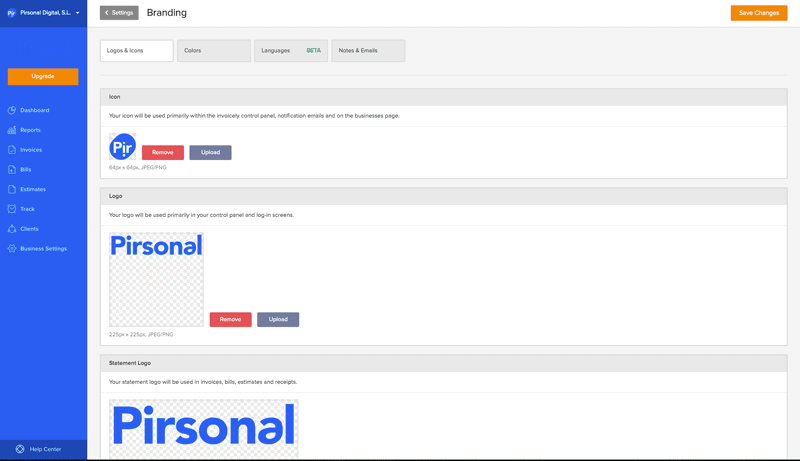
Now, let me share a personalized customer experience example. Pirsonal Pages is a dynamic landing page automatically created by Pirsonal’s personalized video platform. These personalized landing pages are created by companies as part of a marketing personalization strategy, using customer data to create personalized messages that improve the experience and conversions.
Below you’ll find an example of a dynamic landing page to improve the CX experience:
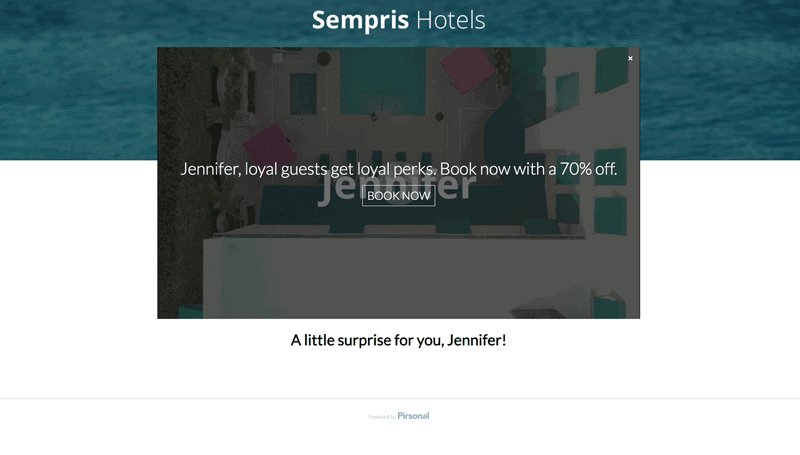
As you can see, it is an organization that personalizes the content of the landing page for each person, and not the user. The user may perceive a better customer experience journey, but the initiative comes from the organization.
Through these dynamic landing pages, companies can automatically personalize the logo and hero banner images, as well as the texts that are displayed and the texts that appear on the automated landing page. Businesses can also embed third-party applications. In other words, Pirsonal’s customer experience personalization tool can create thousands or even millions of fully personalized landing pages for each individual.
This also means that activities of personalization in customer service are executed by an organization and enjoyed by the customer.
Why Your Business Needs A Personalized Customer Experience Strategy
Several experts have found that consumers appreciate personal offers and advertisements via mobile phones, emails, and offline interactions. For example, product recommendations based on previous purchases and personal preferences lead to new purchases.
In fact, according to YouGov, 45% of individuals would interact with marketing messages with offers that are interesting to them. Personalized ads improve a customer’s experience.
The foundation for personalizing the client experience is based on the knowledge of the customer. However, knowing your customers well does not mean that you have a customer experience strategy that uses personalization to make it more sticky, effective, and profitable.
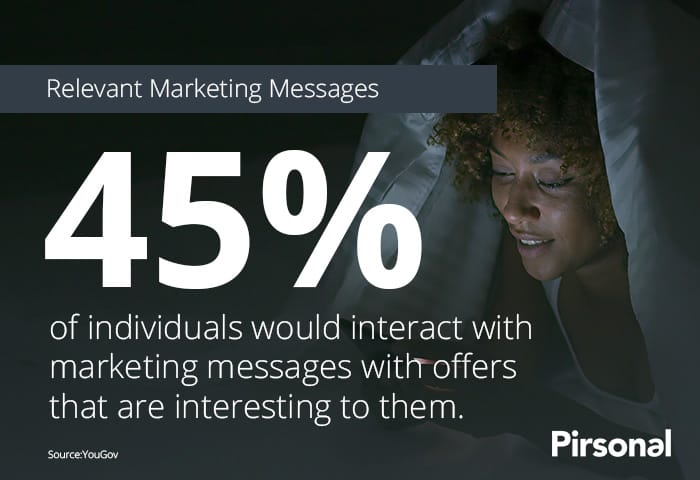
In fact, personalization is key when creating a customer experience and a loyalty program in omnichannel retail. Omnichannel is a cross-channel content strategy that organizations use to improve their user experience and drive better relationships with their audience across touchpoints. With this, we see that a personalized shopping experience makes a difference.
The Science Behind Customer Experience
Researches found that personalization and hedonic motivation have a positive impact on cognitive and emotional CX components, which increases customer loyalty. The results provide both theoretical and managerial insights for improved CX and customer loyalty.
View and download the full research about personalization and motivation in customer experience below:
When businesses advance their relationship with customers, they can apply customer segmentation at a deeper level.
Because this segmentation helps businesses to know more about different segments of customers throughout the various products and services offered by a business, it is also possible to create experiences that are unique to each individual.
The sum of positive experiences will result in an improvement in customer engagement, which also is achieved as part of your personalized marketing strategy.
This is why 88% of marketers see great improvements in their business when they implement customer experience personalization tactics.
Client experience is a customer’s overall perception of your company, based on individual interactions with your brand. Therefore, the focus is on the individual.
Thanks to the democratization of personalized marketing, data analytics, and customer relationship management (CRM) tools, personalization of the customer experience is no longer exclusive to large firms.
For example, a recent study shows that personalized advertising affects the equity of brands advertised on Facebook. Individuals that see personalized ads have an enhanced perception of the brand and subsequent favorable behaviors. These favorable behaviors have a positive impact on the brand-customer relationship.
This Is How To Personalize Customer Experience With Unique Touchpoints
Now that we have covered some of the basic concepts behind customer experience personalization strategy, let me share a few ideas to help personalize new or existing client experience efforts.
1. Customer Segmentation
Customer segmentation will help you be granular when creating CX strategies. Segmenting your customers will also help you create personalized marketing messages that will be presented during the customer journey, resulting in increased engagement.
Customer segmentation is when you split your customer base taking into consideration specific characteristics that help you achieve customer experience, customer engagement, marketing, sales, and operational goals. From a marketing perspective, it helps you create strategies and messages that, as I usually say, talk to your customer’s hearts, minds, and pockets.
In marketing, we also talk about micro-segmentation, since it is different than segmentation itself. Watch the following video to understand more about the differences between segmentation and micro-segmentation:
Marketing Segmentation Criteria
To create customer segmentation, you can follow this segmentation criterion:
- Demographics: Demographic segmentation is one of the most commonly used forms of segmentation. Analyze who your customers are based on criteria such as age, income, number of family members, race, gender, occupation, education, and nationality.
- Skills and knowledge: Study the things your customers know and how they apply this knowledge when they interact with your brand, employees, products, and services.
- Preferences: Divide your customer base taking into account the things your customers like about your brand, products, services, and interactions with your team.
- Behavioral activities: Analyze the behaviors and decision-making processes your customers follow. For example, think about their lifestyle, how, when, and why they buy, and more.
- Psychographics: This takes into account how your customers think and divides markets according to lifestyle, personality traits, values, opinions, and interests of consumers.
- How your customers use your product: Do they use your product like you initially expected? When do they use it? With other people?
- How they buy your products: Similar to the behavioral activities, looking at their processes, how much they spend, when they buy, from what device, if they buy based on a special promotion, and more.
This Investopedia article proposes that the segmentation of your customers generally features these three aspects:
- Homogeneous: Here, you group your clients based on their common needs and use marketing personalization to address those needs.
- Distinctive: Each client within the common needs group is also a unique entity. These differentiators could be anything from their age, their designation and department or tenure to the car they drive, the baseball team they root for, their persona, and their interests.
- Reaction. This one pertains to how your clients react to personalization. Some reactions will be predictable and common across the entire group, while other reactions might differ from client to client.
2. Customer Journey With Touchpoints Based on Buyer Personas And Augmented Buyer Personas
A buyer persona is a detailed description of someone who represents your target audience. Although buyer personas are based on individuals that are not real customers, buyer personas embody the characteristics of your best potential customers. To create them properly, you need to talk to your current customers. This forces you to re-analyze who your customers are and what characteristics are intrinsic to each customer group.
The way to take buyer personas and customer experience to the personalization arena is through what I call augmented buyer personas, a term I created to help me with our clients’ personalized video projects. Understanding this concept helps me create the best personalized video, messaging, and marketing automation strategies.
An augmented buyer persona is the profile of a specific customer. It is comprised of all the interrelated information you gather about your customer. You’ll usually use a set of data sources to know more about that person. Once you have this person’s buyer persona and you take into account the data you gather in close to real-time, you can create a truly personalized customer experience for that person.
Using Augmented Buyer Personas To Create A Personalized Customer Experience With Unique Touchpoints
Personalization represents a persuasion technique any organization can apply because it is based on your initiative toward your customers. Knowing your customers well and structuring this knowledge in a way that can be used by customer experience managers and marketers within your organization gives you so many creative options. Let’s see this with an example. Take a look at the following PDF with a personalized video marketing automation workflow:
It shows the flow of personalized messages a person receives when making a hotel reservation. The hotel’s goal is to improve customer experience and increase the revenue per guest through upselling and cross-selling. To do this, it takes into consideration their segmented audience’s buyer persona based on the characteristics of previous guests and the data they are managing in real-time (when the hotel booking takes place). When they cross both data, they can create a much more granular and personalized message.
In this example, the hotel automatically makes a personalized video, dynamic landing, personalized call-to-action, and personalized email for each customer.
In the following video, I explain how to create these personalized marketing messages as part of a personalized customer experience strategy:
If you want to take a closer look at the personalized email example shown in the video, you’ll find it below:
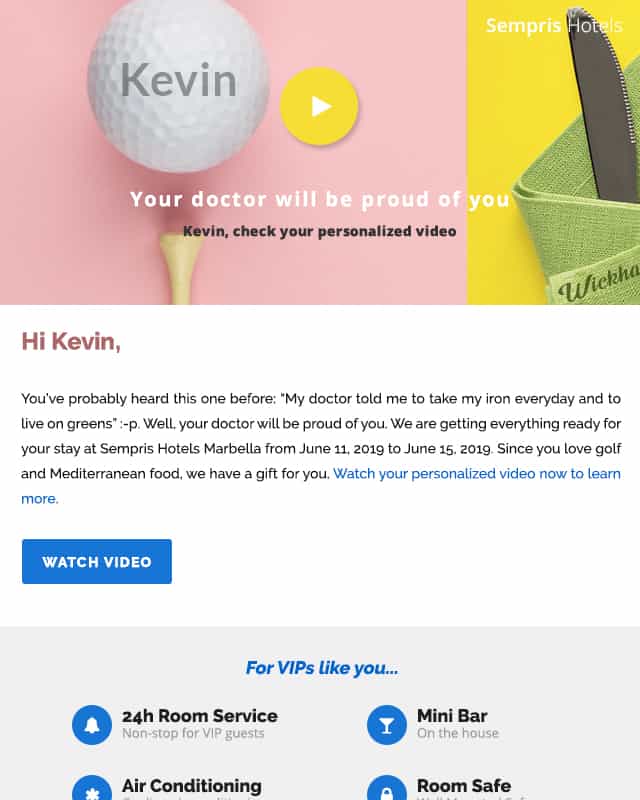
Now, let’s highlight the messages that have been personalized and contextualized in this personalized email:
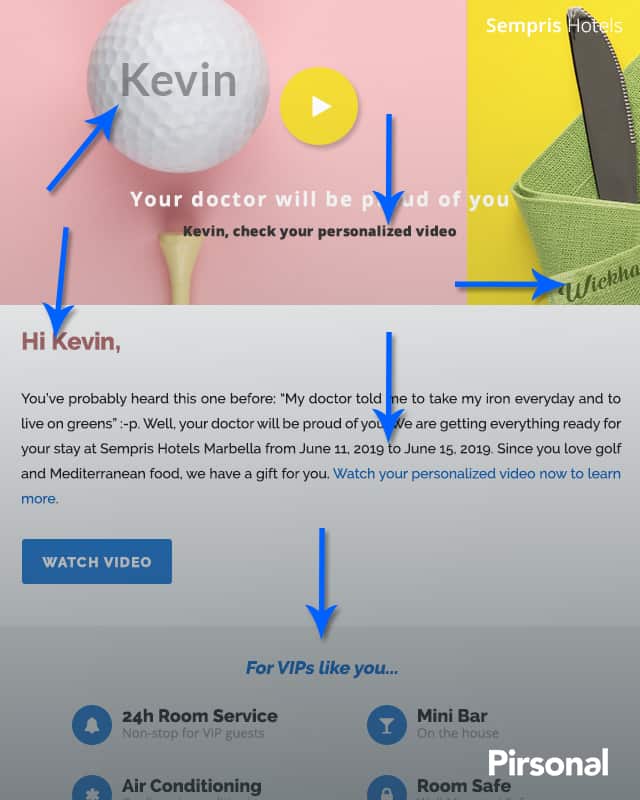
What’s The Difference Between Marketing Individualization and Marketing Personalization
As can see, some messages are personalized, but also individualized messages. Marketing personalization and marketing individualization are not the same. Let me explain this a bit better.
All organizations know something about their customers. Take a look at the following infographic that shows an example of structured data:
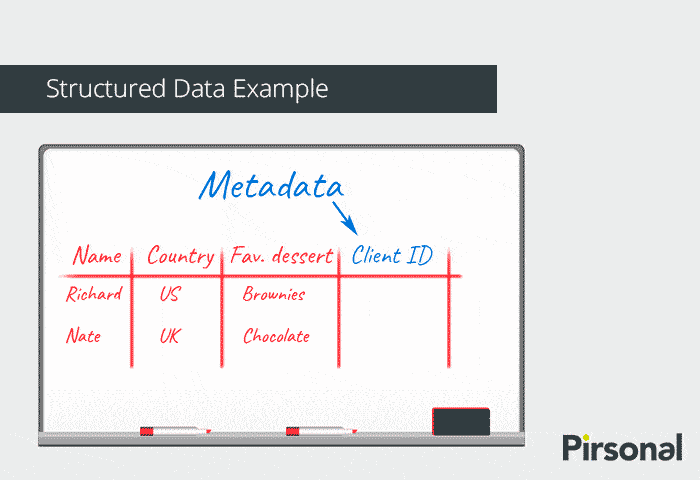
Marketing personalization often shows the data as it is, like in the previous infographic that shows a table with customer data. This information may be printed as it is in your marketing messages, and this is one of the biggest differences between marketing personalization and marketing individualization.
Marketing individualization takes place when the individual you want to target, your brand, and you as a marketer are aligned. When talking about individualization, everything has to do with more contextualized marketing. Both, personalized and individualized marketing, are data-driven and support your personalized customer experience. Both work together to help you achieve the same goals, more importantly from a messaging perspective.
The following image shows the clear differences between personalization and individualization and how this affects the customer’s experience:
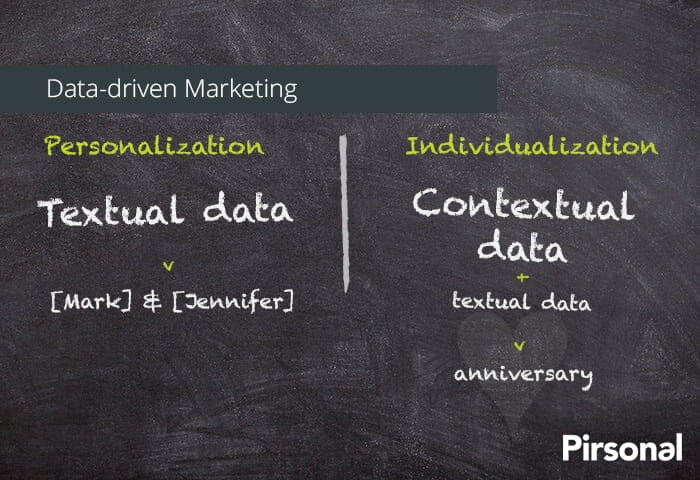
Individualization is all about the customer’s context. It’s about making the data you have about your customers resonate with what they’ll better understand. It’s what I call “translating the data”.
Personalized Customer Experience Examples With Personalized Videos
Customer journey personalization represents one of the biggest opportunities organizations have right now. It is also a competitive advantage since most customer segments are over-saturated with information. Making that experience visual makes it even more impactful for your customers and improves persuasion chances. Let me share some examples that will give you various ideas on how to personalize the customer experience.
Here are two really important facts to keep in mind while you view these examples:
- 90% of the information processed by your brain is visual.
- 80% of people will watch a video but only 20% of people will read text on a page.
This gives you a clear path regarding the importance of delivering a visual personalized customer experience and service. From a user perspective, the more visual the information is, the better.
Using Personalized Video Marketing To Help Clients Understand A Leasing Contract
The Financial Division of a leading car brand uses personalized videos powered by Pirsonal to decrease churn and after-sales complaints and to increase lifetime value (also known as LTV). With a portfolio of more than four million lease and credit financing contracts, it’s essential that each customer clearly understands the financial and practical terms that are specific to each person’s contract.
The following PDF showcases the case study:
Localization and Video Personalization To Improve Customer Experience With Audiences Across 7 Languages
Zumba is a global fitness brand, with a global audience and instructors all around the world. One of their brand and marketing strategies resides in helping their instructor reach their audience through several marketing strategies. In this case, the customer experience strategy comes from the product and branding teams, that decide to use personalized videos in different seasonal campaigns.
Audience engagement through an instructor’s network requires giving instructors the right marketing tools. This helps the sports brand to keep them and their audiences engaged and excited. Video is the type of content that delivers the best conversions, and personalized videos are about 164% more effective than generic videos.
Here is one of the personalized videos they created to increase brand exposure, instructor engagement, and lead generation:
Want to see more personalized video examples?
There are different ways to make personalized videos. Check this guide that explains how to make personalized videos from a spreadsheet (XLS, CSV). This infographic summarizes the batch process:
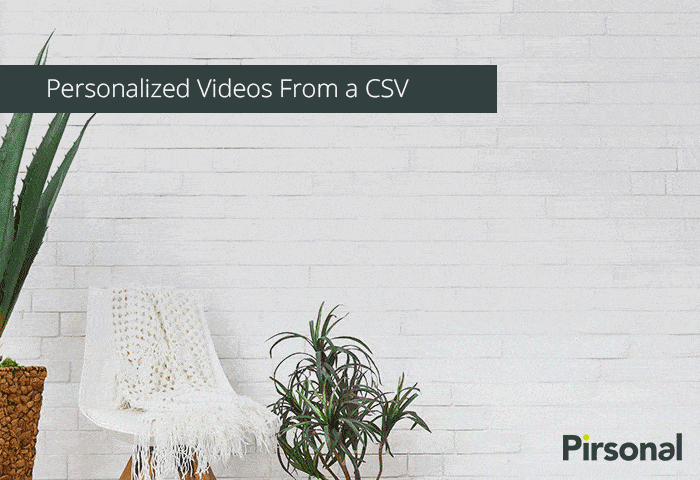
Businesses can also create marketing automation workflows that create personalized videos based on triggers from almost any digital data source. For example, check the following infographic that shows a simple video marketing automation workflow:
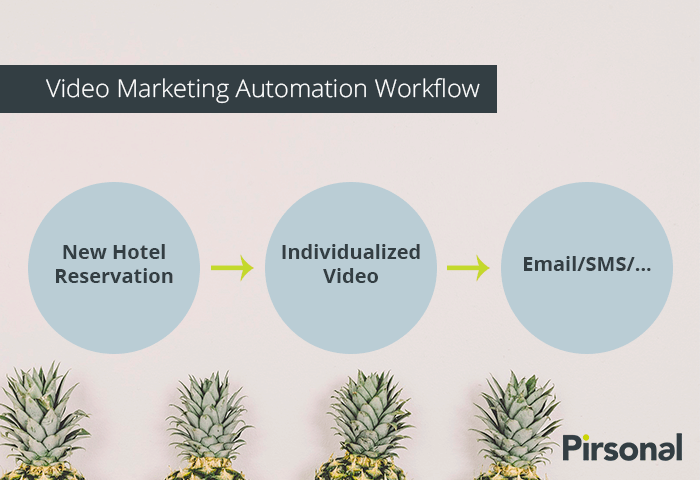
Customer Experience Channels
Choosing the right customer experience channels increases the chances to deliver a message that will be consumed by your segmented customer.
Let me share an example with you.
KLM is a travel brand offering personalization across most of its digital marketing activity. They use personalized emails to retarget customers that abandon carts online, allowing them to carry on the user journey from where they left off. Besides, one of its most innovative displays of personalization has been iFly 50 – an interactive anniversary edition of its brand magazine.
Through iFly, they provide reviews, inspirational stories, and general travel tips. The 50th edition offered readers the chance to pick their five favorite destinations for the chance to win the trip of a lifetime. Striking imagery with interactive user experience is one such way of how to personalize content marketing.
By giving the reader a reason to interact with the brand (instead of passively scrolling), it meant people would be more likely to invest and engage.
Common Types Of Communications You Can Personalize To Improve The Customer Experience
There are different types of communications. Convenience is key from a client perspective. When you choose the right one according to your customer’s preferences, you can increase message exposure, grow website traffic, develop a lasting brand-customer relationship, generate new business opportunities, and upsells.
Let’s take a look at these common types of communications:
Auditory Communication
Auditory communication includes messages that users can hear. It comprises music, words, sounds, and noises. For example, in the hospitality industry, auditory communication takes place through different media related to activity and objectives such as: by face-to-face communication, by a phone call, and radio broadcasting. With audio communications, personalization usually comes in the form of content that is scheduled according to user behavior.
Apart from face-to-face which is the expected standard from most customers, new technologies like text-to-speech allow offering a more intense experience.
Recording personalized voice-overs in a studio is also an option. The decision will have to do with the budget, time, quality, regional accents, and necessary tones of voice. For example, if you work with corporate voices, you would probably prefer to spend two weeks recording and editing 1000-5000 words in a studio rather than using TTS. However, if you are looking for flexibility, volume, and speed (long term), TTS is the best option.
Visual Communication
This includes messages received through sight. Signs, gestures, and images play a major role while communicating. It also contains mediums, such as complaint forms, letters, invoices, contracts, labels, emails, and leaflets. Marketers can apply personalization to almost any type of content, digital or not.
Video marketing has become the main visual communication channel in recent years. The following video is a mix of auditory and visual communication (multimedia). It uses studio-recorded personalized voice-over and shows information that is unique to the user (“Denis”):
Tactile Communication
This comprises messages perceived through touch sense. Through tactile sensation, affection is conveyed. Shaking hands or tapping someone’s shoulder may show some positive or negative effects, so it is essential to be respectful in this context and be aware of cultural conventions. For example, greetings at meetings and negotiations are amongst are popular choices.
Multichannel Communication
Users receive these messages through various senses at a time. Television, video, and specially personalized video, and computer are few mediums through which this is possible. In fact, take a look at these stats for hotel video marketing.
Popular Customer Experience And Service Channels
The following chart gives you an idea of the state of customer communication channels.
It is important to think outside of the box. For example, WhatsApp marketing is huge:
- There are 2 billion WhatsApp users around the globe.
- 1.6 billion WhatsApp users access the app every month.
- WhatsApp was downloaded 96 million times in February 2020.
- WhatsApp is available in more than 180 countries and 60 different languages.
- With 340 million users, India is WhatsApp’s biggest market.
- Every day WhatsApp users send around 65 billion messages.
- 53 percent of WhatsApp users in the US use the app at least once a day.
- One in every five US adults uses WhatsApp.
- More than five million businesses are using WhatsApp Business and growing.
- Half a billion WhatsApp accounts use the WhatsApp Status feature every day.
Conclusion
Understanding how to personalize customer experience gives you a winning path. Your customers are expecting more from you. They want you to anticipate their needs, not only from a customer segment perspective but also individually.
This is why personalization plays an important role that will help you refresh your current customer experience game plan to continue building an engagement that lasts, even during uncertain times, or to start from scratch.
There are literally countless customer experience tools you can use. But, guess what? If you haven’t started, a simple spreadsheet will do.
Why?
Because the most important thing is to start with and by your current customers. Then, think about how to interact with them based on their needs. This will lead you to the right tools to little by little take your strategy to the next level.
If you already have a strategy in place and even tools, identify the interactions where you can use personalization to add more value to the conversation and increase engagement. As I usually say, marketing is a conversation. Keep the conversation flowing starting from the individual context of each person.
